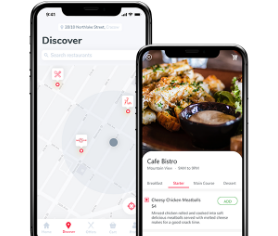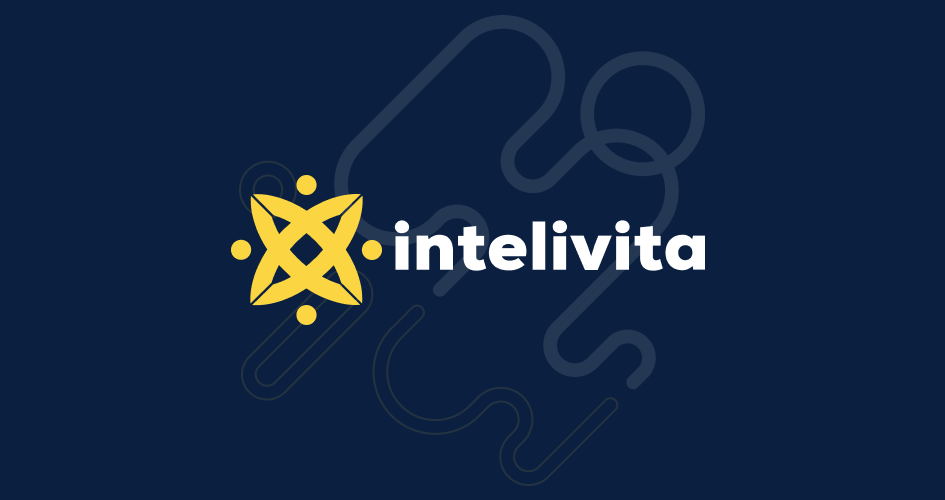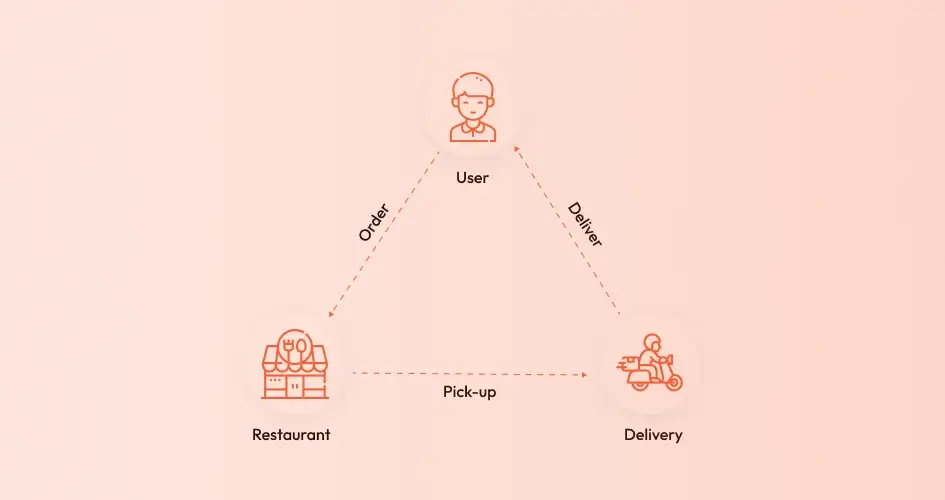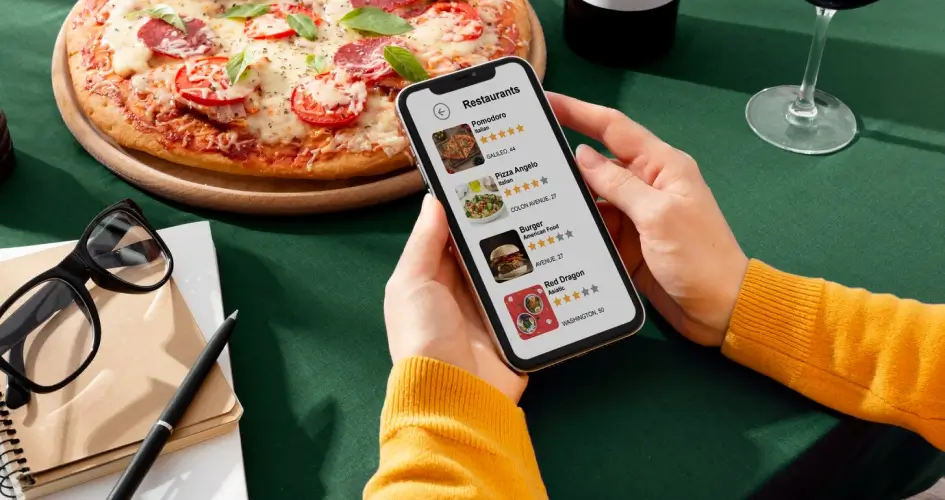One of the quickly growing businesses in the world is that of food delivery app development.
Such rise is mostly fueled by the ever-growing client base for delivered meals due to an ongoing pandemic.
According to Business of Apps, the number of food delivery app users in the United States has reached 111 million by 2020 and will continue to rise.
Revenue is forecast to rise at a 9.89 percent annual rate (CAGR 2021-2025), resulting in a predicted market volume of US$441,622 million by 2025.
Moreover, numbers suggest that individuals purchasing meals online has almost quadrupled in the previous three years, from 364.8 million in 2017 to 625.9 million in 2020.
Subsequently, there is a rise in food delivery app development companies due to such phenomenal growth.
How to Make a Food Delivery App In 6 Simple Steps
Building a successful food delivery app involves a systematic approach through six key steps.
Let’s delve into this!
Step #1. Analyze the Viability of Your Food Delivery App Idea
Before plunging into food delivery app development, start by validating your concept through focused market research.
While giants like DoorDash, Uber Eats, and Grubhub dominate the food delivery scene, niche opportunities abound.
Consider tailoring your app to meet a specific need, such as integrating it with your existing restaurant, grocery store, or local shop.
Developing your app allows for more control over costs and customer experiences, benefiting even smaller businesses like cafes or dessert shops.
Step #2. Opt for Your Food Delivery App Development Approach
Choose the most suitable development method for your food delivery app.
Depending on your resources and expertise, you might opt for various approaches like hiring an app development team, using DIY app builders, or collaborating with a technology partner.
Hiring a Development Team
Deciding to build your app from scratch allows for bespoke customization.
However, it requires sufficient time, resources, and technical expertise.
Forming a specialized in-house or outsourced dedicated development team grants complete control over the app’s design and features, allowing precise tailoring to your specific needs.
However, before choosing this option, you’ll need to consider your budget.
This option may be suitable for you only if you have sufficient budget available.
Using App Builders
DIY App builders offer rapid deployment and user-friendly interfaces, making them ideal for those seeking quicker app launches.
These platforms often have pre-built templates and simplified tools, streamlining the development process.
Ready-made app builders can be a cost-effective option for you.
However, they might restrict flexibility and customization options when compared to developing an app from scratch.
Collaborating with a Technology Partner
Joining forces with a technology partner combines customization with accelerated development.
This collaborative approach allows you to leverage their expertise while ensuring tailored solutions meeting your specific needs.

👉 Building from scratch gives maximum customization but requires substantial time and resources.
👉 App builders offer quicker deployment at the cost of flexibility.
👉 Collaborating with a tech partner combines customization with faster development, sharing expertise for a robust solution.
Step #3. Define Your Food Delivery Business Strategy
Define your food delivery business model to align with your food delivery app.
Decide whether you’ll operate as an aggregator, partnering with various restaurants, or offer your own delivery services.
Consider subscription-based, commission-based, or hybrid models to monetize your app.
Aggregator Model
In this model, the food delivery app acts as an intermediary between customers and multiple restaurants.
Customers can browse through various restaurant menus on a single platform and place orders.
The app earns revenue through commissions charged to restaurants for orders processed through the platform.
Delivery Service Provider Model
Under this model, the food delivery app not only aggregates restaurants but also provides its delivery fleet.
It manages the entire delivery process, enabling restaurants that don’t have their delivery staff to fulfill orders.
The app charges fees both to restaurants and sometimes customers for delivery services.
White Label Solution or Owned Delivery Model
This model involves a food delivery app developed specifically for a single restaurant or a chain of restaurants.
It is feasible to invest in developing your food delivery mobile app, which is optimal for medium and big enterprises.
Examples include the Domino’s Pizza app.
It often includes its dedicated delivery system and logistics, providing a unique customer experience and complete control over branding, operations, and customer relationships.
Step #4. Cherry-Pick Your Essential Features
When determining the features for your food delivery app, prioritize functionalities that enhance user experience and streamline operations.
User-Friendly Interface: Design an intuitive interface that simplifies the ordering process.
Ensure easy navigation, clear menus, and a smooth flow from menu selection to checkout.
Secure Payment Gateways: Implement robust and secure payment systems that provide users with convenience in transactions.
Provide various payment options considering user preferences.
Real-Time Order Tracking: Integrate a feature that enables customers to track their orders in real-time, enhancing transparency and reducing uncertainties.
Personalized Profiles: Allow users to create profiles, save preferences, and track order history to enhance their individual experience.
Feedback & Rating: Integrate systems for users to share feedback and ratings post-orders.
Utilize this input to consistently enhance service quality.
In addition to these essential features, consider:
Geolocation Services: Utilize GPS to facilitate efficient and accurate deliveries.
Robust Search Options: Implement advanced search functionalities, allowing users to find restaurants, dishes, or cuisines quickly.
Social Media Integration: Enable sharing, login, or promotions through social media platforms, expanding your app’s reach.
A successful food delivery app prioritizes simplicity and user-friendly design.
Focus on delivering a smooth and pleasant user experience, making sure every feature benefits both the user and the app’s operational efficiency
Step #5. Designing & Building Your Food Delivery App
With a clear plan in place, proceed to design and develop your app.
Create wireframes and prototypes to visualize the app’s structure and functionality.
Collaborate closely with designers and developers to ensure that the features and aesthetics are well-integrated, highlighting the crucial role of UX/UI Design in food app development.
Focus on creating a responsive and scalable app.
Prioritize functionality mobile app testing, ensuring the app performs flawlessly across various devices and operating systems.
Regularly gather feedback and make improvements throughout the development phase to refine and enhance the app.
Step #6. Promotion and Launching
Get ready for the app launch by creating a strong marketing plan.
Use different channels like social media, partnerships with influencers, content marketing, and optimizing the app store (ASO) to build excitement and get people to download the app.
Make sure the process of new users starting to use the app is smooth and interesting.
Offer special deals or bonuses to encourage people to try the app early.
Listen to what customers say and make final changes before the official launch.
Plan a coordinated launch that gets people excited about your new food delivery app.
Read here for a comprehensive guide on how to launch an app from Ideation.
Food Delivery App Features Based on App Type
As a result of our extensive research, we’ve compiled a comprehensive list of features that any future food delivery method or ordering platform should have.
Let’s have a look at the most recent updates.
Customer application: Users can place an order for delivery from neighboring establishments.
Restaurant application: Restaurants can view and handle user orders.
Restaurant application: Restaurants can view and handle user orders.
Courier application: Couriers are notified of new orders.
Additionally, they may see the order’s status and the delivery details.
Control panel for administrators: An admin panel enables the product owner and their team to administer the whole platform.
They may, for example, add or remove restaurants and users.
-
Customer Version
An online food order should be visually appealing and as simple to use as feasible for the users.
The primary objective is to enable clients to place orders swiftly and pleasantly.
Technically speaking, the customer-facing version of the application should provide the following features:
An individual profile
It contains data on the customer, their preferences, payment methods, and other pertinent information.
You can make it useful by saving orders so they may be repeated, saving the address so you don’t have to input it each time, and so on.
Timeliness of delivery and real-time tracking
The real-time delivery tracking feature displays the estimated arrival time of the courier.
A useful feature is the ability to follow the status of an order at any given time.
Payments
Fee functionality should be attractively designed to inspire a feeling of security and executed technically properly.
Multiple payment methods, repeat payments, card verification, and other solutions all contribute to speeding up and securing the payment process.
Ratings and testimonials
Before ordering, customers need to familiarize themselves with meals, and the easiest way to do so is to read reviews and opinions on the business and the word.
Push Notifications
This tool enables you to get quick notifications when the status of order changes.
Other key features to include:
- Restaurant search location tracking
- Order placement
- Ratings and reviews
These are the features that one must include during the app development.
-
Restaurant App
It’s all about receiving orders, keeping track of notifications, and maintaining menus.
This application may appear as a web-based version or as a native application loaded on a kitchen tablet.
Employees at restaurants will use this app to monitor incoming orders and notify the courier when an order is ready.
The app’s primary features are somewhat different in their objectives.
Registration and authentication
This website allows workers to log in and see incoming orders.
Management of menus
Restaurants should update their menus so that users see the most up-to-date information when placing an order.
Otherwise, it may have a detrimental effect on both your service and the reputation of the business.
Management of orders
Restaurant employees must be familiar with all incoming orders and operate efficiently with them.
They may use this functionality to receive orders and modify their status.
Ratings and testimonials
Allow restaurant owners to see comments and reviews, and don’t forget the opportunity to react. Customer communication is critical.
-
Courier Version
The courier is the most critical link in the chain connecting a customer and a business in a food ordering app.
Since the restaurant’s efficiency is determined by its work, the courier edition of the food app should offer the following features:
Courier profile: For the courier, it provides a wealth of data such as the number of completed deliveries, customer ratings, comments on their job, and more.
Order Processing: The ability to accept or reject orders, check information, leave a remark, and other capabilities to facilitate quick order processing.
Delivery Status: A food delivery app startup can provide this feature to give courier people real-time visibility into the order’s quality, details, and other relevant information.
The Locations and the Routes: The courier must offer a detailed plan that shows all of the destinations and the best ways to get there.
This will increase productivity, logistics, and delivery speed.
For Android and iPhone, the courier edition must not be cluttered.
-
Admin Version
There will always be arguments and challenges in any work that involves human interaction.
When working in the food delivery business, there are additional concerns and problems of this kind. The administrator resolves them.
Additionally, he is responsible for processing orders, receiving payments, and supervising the couriers’ performance.
The administrator’s version of the application must have the following features:
Personal information: Additionally, there are profiles for both the consumer and the courier.
Organization of work and better communication with customers would benefit from this.
Managing content: Other content management features, such as adding new products, changing pricing, or restricting certain restaurants or meals, should be developed.
Order processing: All online orders are accepted by the administrator and processed in the quickest way feasible.
Orders are sent to the restaurant if the app is made for your restaurant or café by an aggregator; otherwise, order processing is done by the business.
The act of receiving money: The client-side application has a payment feature.
Administrators should have access to information such as payment status, receipts tables, and other relevant data.
These features should be included in all three iterations of creating a food delivery app.
The user chooses the rest of the characteristics based on money, time allotted, establishment requirements, and so on.
Tech Stack to Develop a Food Delivery App
When developing a food delivery app, choosing the right tech stack is crucial for its efficiency, scalability, and overall performance.
For example, if you want to list eateries, you’ll need the Grubhub or FourSquare APIs.
Meanwhile, you may accept and process payments using popular payment gateways like Square API, Braintree, Stripe, and PayPal.
Additionally, you’ll need technology in your food delivery app that pinpoints the user’s position.
Google Places API, Google Maps, and the Core Location Framework are all excellent possibilities.
Here’s an overview of the essential components within the tech stack:
Back-end |
Front-end |
Infrastructure |
Database |
Real-time Messaging |
| Node.js | ReactJS, React Native | AWS, Google Cloud | MongoDB, PostgreSQL | Firebase Cloud Messaging |
| Python (Django) | AngularJS, Vue.js | Microsoft Azure | MySQL, Cassandra | Kafka, RabbitMQ |
| Ruby on Rails | Flutter | IBM Cloud | Firebase, SQLite | Pusher, PubNub |
| Express.js | HTML, CSS, JavaScript | Heroku | DynamoDB |
What Are the Advantages of Delivery Apps?
Increased Market Value
Without acquiring new clients and earning a profit, it is hard to build a business.
The introduction of new technologies will boost client acquisition and loyalty; as a result, the average check will grow as well.
Time Savings for Consumers
More people are working remotely, and they need quick food without moving out of their place.
With food delivery application development, you are providing them with the option to fulfil their need cost-effectively.
Simple Ordering System
A food delivery app startup would create a seamless mobile app to connect with the consumer quickly.
The simpler the order and delivery process, the better it is for the consumer.
Optimized ROI
This is a metric of the investment’s profitability, or, to put it another way, the payback rate.
Food ordering application development startups can get a higher return on investment given the large market share it renders.
Growth of the Business
Implementing modern technology enables you to increase your food delivery software development drastically.
There are multiple aspects that businesses need to consider when creating an application for food delivery.
The more features an app has, the more reliable and user-friendly it will be.
It’s important to keep in mind that the simple order process increases the number of app users and the number of restaurants that partner with the app.
How Much Does Food Delivery App Development Cost?
At this point, it’s time to figure out the cost of app development for food delivery.
It all depends on how many features and how difficult the project is to implement.
The ultimate cost will rise in direct proportion to the number of features included.
Based on the elements listed above, we’ve come up with our own estimate.
The cost of a mobile app is influenced by a variety of factors, such as the number of platforms, features, and connectors.

Mobile developers will only produce a thorough app estimate following the discovery phase.
This is the first phase for you and your core team to lay the foundation for food delivery app development.
This stage consists of various components, including the following:
- Specification of functional requirements
- Design of the user interface and user experience.
The discovery phase of the product development process may assist you with the following:
- Establishing a work scope
- Creating a roadmap for the project
- Establishing a budget for the MVP that is both reasonable and achievable
- Resource planning
- Conducting a target audience test of the app’s MVP
- Creating an investment argument that is compelling.
The Cost of Food Delivery App Development
Getting the UI/UX design done would require 50+ hours.
The coding for food delivery app development would in total take 66+ hours to construct the app’s back-end, and 120+ hours for the development stage for each platform.
| App Type | Average Cost | Timeline |
| User app for iOS and Android | $60,000 | 1,206 hours |
| Courier app for iOS and Android | $45,000 | 914 hours |
| Web-based solution for restaurants | $9,000 | 182 hours |
| Web-based admin panel | $12,000 | 257 hours |
| Total | $126,000 | 2,559 hours |
Keep an eye on current food delivery app trends and do not forget to provide your consumers additional value that your rivals don’t have.
If you are not sure of how to create a food delivery app, then you can gauge the budget to decide whether you want to create an Order-Only app or Order-and-Delivery Model food delivery app.
In the second stage of development, the app MVP may be used to collect user feedback and implement further features.
Frequently Asked Questions
Q.1 How Do Food Delivery Apps Work?
The whole food delivery app system operates as follows:
- The customer placed an order using a meal delivery application.
- The restaurant acknowledges receipt of an order.
- The courier closest to the restaurant receives the order and delivers it to the eatery.
- The courier delivers the customer’s order.
Q.2 How Can I Monetize a Restaurant Food Delivery Service App?
You have two options when it comes to food app monetization:
The cost of dining at a restaurant for each order that is delivered, your service charges can be fixed (or a variable price).
Additionally, restaurants can pay to get listed on your app and get recommendations by charging a fee through an advertising model.
The charge for using the service for delivered orders is subject to an additional fee, which the customer bears.
In addition, you may be able to benefit from certain times of the day when the delivery traffic is high.
The surge fee can be added during peak lunchtime and dinner.
If you want to generate extra money, you may charge a higher delivery price.
Q.3 How Much Does it Cost to Build a Food Delivery App?
If we are to get to a ballpark, the estimated cost of developing a food delivery app ranges from $10,000 to $125,000.
Q.4 How Do You Calculate Cost of Food Delivery App Development?
The cost of developing a food delivery application is determined by three primary factors:
- The number and complexity of the app’s features
- The time required to integrate the features
- Developer’s hourly rate
If the quantity and complexity of features increase, the cost of developing a food delivery app may increase.
This computation may be simplified using a simple formula.
Let Intelivita Help You Build Food Ordering App
You must be very clear about your expectations and needs.
Discuss every aspect of the food delivery mobile application development project, including the cost of development, how to monetize free applications, and the development timetable.
If you want further information, connect with our application development team to outsource app development for your food delivery business.
Simply complete our contact form and one of our sales professionals will call you to address your inquiry. The consultation is completely free.
At Intelivita, we have extensive expertise developing full-cycle iOS, Android, and web applications.
Our engineers work only with cutting-edge technologies like Kotlin for Android, Swift for iOS, and Angular for web development.
Additionally, we operate in a variety of areas, including sports, healthcare, travel, education, and social media.





